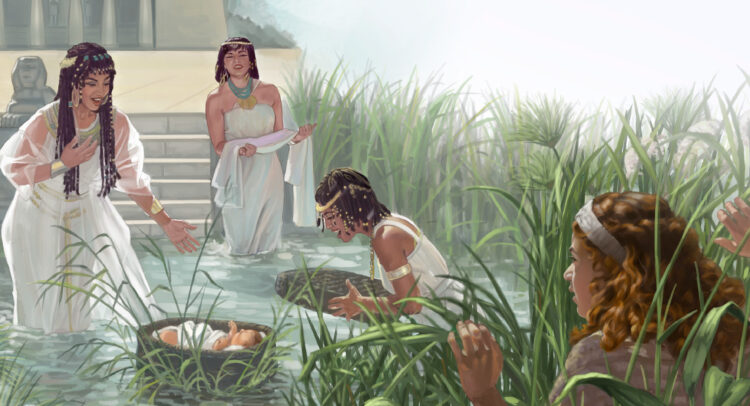Raboyseyee and Ladies,
Was Paroy’s daughter -nameless in the heylige Toirah- mamish also Jewish? Is every shiksa the medrish likes, also Jewish? We shall explore all that below, but let’s begin here.
One Sefer down, four to go until Simchas Toirah and we start over again. Sefer Bereishis covered 2,000 years of history -from day one of creation- in 50 chapters. Shmois covers less than 200 years in 40 chapters and the great majority of Shmois takes place over but a few years. The first 16 chapters detail slavery and freedom, let’s begin. Ober, ershtens (firstly), after last week’s story about Debbie, the rebbe and me, a number have written, called, sent messages, and let it be known that they want the rest of the story; here we go.
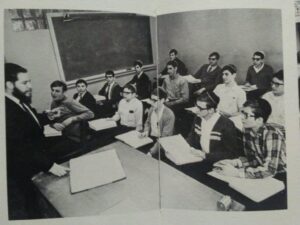 As mentioned last week, I snuck out of the rebbe’s house and made my way to Debbie’s house wearing Joel Lang’s glasses. All was great. I met the parents in their beautiful home located at 624 Madison Avenue. Debbie and I were mamish engrossed in conversation, the time was flying by. Ober when it was time to leave, the RBSO had another plan in mind for the future heylige Ois. And just like that, it started to rain, heavy and steady. On my mind as the rain fell harder and harder was but one thing. I had but one suit to my name and no coat. My suit was going to get ruined walking back to the yeshiva dorm over on Qunicy. By now you chap that all the street names in the area were named after Presidents; the yeshiva building on Monroe, the dorm two blocks up on Quincy, the tailor, and one -within walking distance- candy store on Clay, and the classrooms over at the Machzeki Adas on the corner of Madison and Vine. What to do?
As mentioned last week, I snuck out of the rebbe’s house and made my way to Debbie’s house wearing Joel Lang’s glasses. All was great. I met the parents in their beautiful home located at 624 Madison Avenue. Debbie and I were mamish engrossed in conversation, the time was flying by. Ober when it was time to leave, the RBSO had another plan in mind for the future heylige Ois. And just like that, it started to rain, heavy and steady. On my mind as the rain fell harder and harder was but one thing. I had but one suit to my name and no coat. My suit was going to get ruined walking back to the yeshiva dorm over on Qunicy. By now you chap that all the street names in the area were named after Presidents; the yeshiva building on Monroe, the dorm two blocks up on Quincy, the tailor, and one -within walking distance- candy store on Clay, and the classrooms over at the Machzeki Adas on the corner of Madison and Vine. What to do?
Shoin, at some point in the evening and as the rain continued to fall – the Ois would be lying if he recalls when- Debbie’s father (David Harris, OBM) walked into the room and said these -or very similar words- ‘It’s raining quite hard outside, perhaps you should consider staying here tonight and walk back to the yesheveh in the morning.’ (Notice how the Scrantonian’s pronounced the word: yesheveh as opposed to yeshiva.) What? OMG! Sleeping over at a girl’s house at my age? While in yeshiva? Unthinkable and unheard of! Mamish like a malach, Debbie’s father’s plan was about to save the day, the night, and especially my suit. Why I had but one suit to wear from September of 1969-june of 1970 is davka because we were poor, and one shabbis suit was all I had. Before you get all teary-eyed, there’s more: I also owned but one pair of pants which were meant to last me the entire year. They didn’t but that story, the hole in my right side back pocket, and even more, for another time.
What does a 14-year-old do when one is invited to stay over at a girl’s house? One complies and says thank you, one stays! Debbie supplied a pair of pj’s and we spent the night talking. And just like that, on that Friday night, I had my first sleepover at the home of Debbie Harris.
In the morning, I made my way back to the yeshiva. I no longer recall what took place nor what time in the morning I got back; those details have left me. But the most memorable event of that entire episode is what took place the following Friday night. As is the custom in many out-of-town yeshivas and in shuls today -especially of the Young Israel type, the minhag was/is for the entire student body to form a line which would snake around until each bochur (young man) made his way past all the rebbes and the Rosh Yeshivas (heads of school). We greeted each one a good shabbis and got one back. A long line of close to 100 of us were waiting to pass each rebbe, exchange Shabbis salutations, and maybe also get a handshake. Typically, one passed, extended greetings, waited in the hallway for his friends, left the building, and together made our way back up the hill from the shul building on Madison to the yeshiva building on Monroe for the Shabbis meal.
From time to time, one or two bochurim (boys) were invited to the Rosh Yeshiva’s house for the meal, such invitations almost always extended as they passed them on the line. Being stopped, or told to wait until all had passed meant only one of two things: one was being invited to eat at the Rosh Yeshiva’s house, or, the Rosh Yeshiva had something important to tell you.
And now for the drama: it’s one Friday night later and the then future Ois sporting his first acne pimples was walking by Rabbi Yaakov Schneidman -one of the two Rosh Yeshivas. The following encounter took place. I repeat the exchange verbatim because the words never ever left me. As I get to him and wish him good Shabbis -he was the second person on my left- he asked that I stay behind. As mentioned, it meant only one of two things: Was I about to score an invite to his house for the meal? I was both nervous and excited at the same time. I waited for the rest of the Beis to empty out and stood there in the hallway waiting for the rabbi to come out. Within minutes, it was the two of us. He then shook my hand and said the following words:
“I hear that you’re trying to me mekarave (bring close, or influence) Devora Harris to attend a yeshiva high school out of town next year; leave the kiruv work to us!”
Well blow me down: he knew just where I had spent the past Friday night. He seemed to know details/ but how? To this day, I don’t know with certainty. Was I ratted out by one of my roommates? Was Joel upset that I took of -albeit with permission- his glasses? Was he jealous? Or, was it my other roommate Sheldon L from somewhere in Tennessee? Or, was it Mr. Harris himself trying to protect me by telling the Rosh Yeshiva what went down with the rain? It’s 54 years later and I still don’t know with certainty.
What I do know is this: the rabbi’s words to me were very carefully selected. They were at once shocking but also so soft, beautiful, and encouraging. Mamish within days, the Rosh Yeshiva knew I went missing from the dorm, where I was, and where I had spent the evening- talking only, avada. Amazing. He could have excoriated me, expelled me and ver veyst, what else? Instead, he looked me in the eye and spoke words that I remember until today. A small miracle. For that I always respected him. I was not expelled, nor punished. That being said, in June of 1970, as the semester and school year were coming to an end, the other Rosh yeshiva, Rabbi Chaim Bressler, also a fine gentleman, called me aside and suggested that I would do better in another yeshiva in the coming year. I was sort of invited not to return.
Did the story end there? Not? Debbie and I kept in touch past the school year and over the summer. Somewhere in my collection of things never thrown out, I have a letter she sent me from Camp Morosha. A few years later we met up in the city. Forty two years later, back in 2012, when news got to me of her mom’s passing and that the family was sitting shiva in Riverdale, I paid a shiva call. She barely recognized me. Where is Debbie today? Ver veyst? I certainly hope and trust that she is doing well.
Shoin, let’s get back to the parsha where the RBSO is about to perform some bigger miracles, way bigger than me surviving that meeting in the hallway in the spring of 1970. Zicher you remember that many parshas back, way back in Lech Lecho, the RBSO promised Avrom -not yet- Ovenu that his children would -one day- and for a long time, be strangers (seemingly He meant slaves) in (and in) a nation that does not belong to them. Guess what? He didn’t forget: In this week’s Parsha of Shmois, He makes good. Seemingly the RBSO has a long memory; that -as you know from past postings- cannot be good news for most of us! Yikes!
Welcome to the Book of Exodus where we will meet a brand-new set of Toirah personalities, heroes, characters, and of course, a few villains. The amazing stories of slavery and redemption will carry us through the next four shabosim. Ober what the hec happened to the Yiddin? How did they become enslaved? And why? Just last shabbis as Yaakov was saying his final goodbyes (before dying, according to some) and doling out blessings to (most of) his children, the Yiddin were living the good life over in Goshen. They were prospering, probably buying and selling land, flipping deals, and were mistama shvindeling the goyim whenever the opportunity arose. Their brother Yoisef was the Viceroy of Mitzrayim and in charge of the food granaries during the years of feast and famine. During the lean years, he sold food for cash. When their cash was depleted, he accepted barter and took their animals as payment. Thereafter, he accepted land for food and eventually the Mitzrim were left with nothing while Paroy and his treasury were enjoying huge profits. Mitzrayim became a very wealthy nation; its trade surplus more than healthy. There were not reliant on imports from China. We imagine that Yoisef mistama paid himself and his brothers healthy salaries, and as stated above, life was pretty damn good. As well, there were many shiksas to enjoy and even marry. Of course, this all took place before the Yiddin were instructed otherwise. Ober, trouble was lurking. While they were enjoying the good life, the RBSO’s stranger/slavery plan was about to enter its next phase.
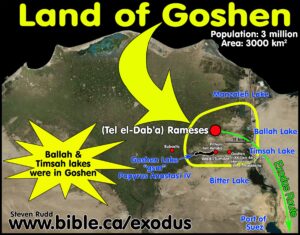
All we can say is ‘eych noflu giboirim’ and ‘vey iz mir’ (how the mighty have fallen and woe is to me). Ober vus iz gisheyn (what the hec happened)? How did all this unfold so quickly? And why? Were the Yiddin being punished? Nu, to answer these questions, we must -as mentioned mamish above- roll the heylige Toirah all the way back to parshas Lech Lecha where (Bereishis 15:12-14) the RBSO told Avrohom azoy:
| 12. Now the sun was ready to set, and a deep sleep fell upon Avrohom, and behold, a fright, a great darkness was falling upon him. | יבוַיְהִי הַשֶּׁמֶשׁ לָבוֹא וְתַרְדֵּמָה נָפְלָה עַל אַבְרָם וְהִנֵּה אֵימָה חֲשֵׁכָה גְדֹלָה נֹפֶלֶת עָלָיו: | |
| 13. And He said to Avrohom, “You shall surely know that your seed will be strangers in a land that is not theirs, and they will enslave them and oppress them, for four hundred years. | יגוַיֹּאמֶר לְאַבְרָם יָדֹעַ תֵּדַע כִּי גֵר | יִהְיֶה זַרְעֲךָ בְּאֶרֶץ לֹא לָהֶם וַעֲבָדוּם וְעִנּוּ אֹתָם אַרְבַּע מֵאוֹת שָׁנָה: | |
| 14. And also the nation that they will serve will I judge, and afterwards they will go forth with great possessions. | ידוְגַם אֶת הַגּוֹי אֲשֶׁר יַעֲבֹדוּ דָּן אָנֹכִי וְאַחֲרֵי כֵן יֵצְאוּ בִּרְכֻשׁ גָּדוֹל: |
The bottom line: The RBSO appeared to Avrohom in a dream and told him that one day in the future, his progeny -seemingly for no apparent reason- will be strangers in a land that is not theirs. They will become enslaved for 400 years and thereafter, will leave with great wealth. Why? Ver veyst! The RBSO never told Avrohom why and it’s none of our business. The time will come and fartig. It’s all about to unfold. And what can we learn from that myseh? Sometimes, for no reason at all, or at least not one revealed to us, the Yiddin must endure lots of hardship. And here we are again since early October of 2023. Shoin, hopefully this will pass soon. Is there any good news? Perhaps! It appears to the Ois that for only the second time in Jewish history, the Yiddin appear unified, or mostly unified. When was the first time? Following years of slavery and just as they arrived to Har Seani for Revelation, we read these words in the heylige Toirah (bolded) and in Rashi who adds color: ויחן שם ישראל. כְּאִישׁ אֶחָד בְּלֵב אֶחָד: – AND THERE ISRAEL ENCAMPED as one man and with one mind.
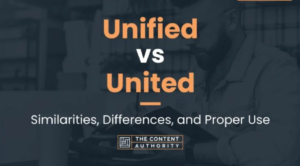
More good news: Mamish a few pisukim after reading of the enslavement, we read about the birth of Moishe. And to show His mastery of the world and perhaps His sense of humor, the RBSO arranged matters so that the unnamed baby would be placed into the river only to be fished out, sabed and named by Paroy’s own shiksa princess daughter whose name was either Bisya or Basya (reader’s choice). Was that her real name? Was she really a shiksa? Or, is it possible -as the title of this week’s post does maybe suggest- that she was mamish a Jewish Jewess? One thing is zicher: her limited role was to seemingly save our savior Moishe. Let’s dig a bit more, let’s find out who she really was. Was she in fact Bisya or Basya? How did she get this Jewish name? Is this name -any version of it- written anywhere in the heylige Toirah? Not! In fact, she goes unnamed. And if the Toirah did not name her, who did? Let’s find out by first reading the relevant pisukim. Says the heylige Toirah (Shmois 2:5) azoy:
שמות ב:ה וַתֵּרֶד בַּת פַּרְעֹה לִרְחֹץ עַל הַיְאֹר וְנַעֲרֹתֶיהָ הֹלְכֹת עַל יַד הַיְאֹר וַתֵּרֶא אֶת הַתֵּבָה בְּתוֹךְ הַסּוּף וַתִּשְׁלַח אֶת אֲמָתָהּ וַתִּקָּחֶהָ. ב:ו וַתִּפְתַּח וַתִּרְאֵהוּ אֶת הַיֶּלֶד וְהִנֵּה נַעַר בֹּכֶה וַתַּחְמֹל עָלָיו וַתֹּאמֶר מִיַּלְדֵי הָעִבְרִים זֶה.
The daughter of Paroy came down to bathe at the river, while her attendants walked beside the river. She saw the basket among the reeds and sent her maid to bring it. 2:6 When she opened it, she saw the child. He was crying, and she took pity on him. “This must be one of the Hebrews’ children,” she said.
Is there a name attached to Paroy’s daughter? Not! In the heylige Toirah, the daughter of Paroy is introduced and presented as an empathetic princess who saves baby Moishe after discovering him in the Nile and raises him as one of her own. Oib azoy, if she was nameless, who named her? When? And why that name? Shoin, as we will read below, our sages of the medrish, later quoted in the heylige Gemora, seemingly reimagined her based on how they wanted her to be, and even gave her a name. Is that emes? We shall soon see. All we know with certainty -because so the heylige Toirah tells us- is this: Once baby Moishe was saved, his sister Miriam Bottom of Form stepped out from the bushes and offered to fetch a Jewish (Israelite) woman to nurse the child. Paroy’s daughter agreed, and offered that Israelite woman—who happened to have been the child’s mother—wages as a wet-nurse (2:7–9). Another medrish will tell us that Moishe refused to latch onto the breasts of Bisya; mistama he was makpid (strict) about cholov yisroel. The good news: she was more than willing to pay for the service; goyim don’t mind paying retail. Veyter.
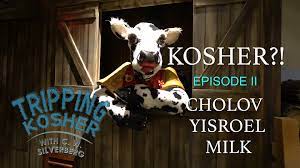
Some years later -just how many we are not told- and then this posik:
שמות ב:יוַיִגְדַּל הַיֶּלֶד וַתְּבִאֵהוּ לְבַת פַּרְעֹה וַיְהִי לָהּ לְבֵן וַתִּקְרָא שְׁמוֹ מֹשֶׁה וַתֹּאמֶר כִּי מִן הַמַּיִם מְשִׁיתִהוּ.
When the child grew up, she brought him to Paroy’s daughter, and she took him as her son. She named him Moishe (moshe), “because,” she said, “I drew him (meshisi) out of the water.”
And just like that, Paroy’s daughter disappears from the text and is never again mentioned. In the Toirah, she remains nameless. What do we know about her, and her relationship with Moishe? Nothing! How long was he under her care? Ver veyst? Did she keep his identity secret? Or, was Moishe running around the Paroy’s palace with his tzitzis out and a yarmulka on his head? How did she react when she heard that he wacked a Mitzri? And how did she feel when her so-called-son was forced to run for his life? And did she -with a Jewish son under her care- agree with, or object to her father’s policies towards the Yiddin?
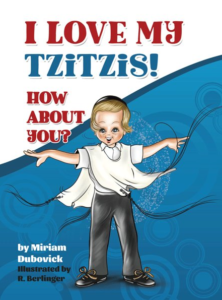
The bottom line: we know nothing because the heylige Toirah is mamish silent on all these questions. What to do? Shoin, not to worry because that’s mamish what the medrish does: It fills in the details of the laconic biblical tale. Lets’ read how Bisya or Basya got her name in the medrish and what a few had to say. Let us begin with this shtikel medrish (Vayikra Rabbah) where we read this:
וְאֵלֶּה בְּנֵי בִּתְיָה בַת פַּרְעֹה, רַבִּי יְהוֹשֻׁעַ דְּסִכְנִין בְּשֵׁם רַבִּי לֵוִי אָמַר לָהּ הַקָּדוֹשׁ בָּרוּךְ הוּא לְבִתְיָה בַּת פַּרְעֹה, משֶׁה לֹא הָיָה בְּנֵךְ וּקְרָאתוֹ בְּנֵךְ, אַף אַתְּ לֹא אַתְּ בִּתִּי וַאֲנִי קוֹרֵא אוֹתָךְ בִּתִּי, שֶׁנֶּאֱמַר: אֵלֶּה בְּנֵי בִּתְיָה, בַּת יָהּ.
Rabbi Yehoshua taught in the name of Rabbi Levi that The Holy one said to Bisya the daughter of Paroy: “Moishe was not your son, yet you called him your son; you, too, though you are not My daughter, yet I will call you My Daughter.” This is why it says: “These were the sons of Bisya, daughter of Yo.” Well, blow me down: in this medrish, the RBSO Himself rewarded her for her good deed. In this medrish, her first reference is as the daughter of Paroy, but in the second, at the end of the medrish, she is referred to as the daughter of the RBSO. Gishmak mamish.
There’s more: In Divrei Hayomim (1 Chronicles 4:18), we find this: In its genealogical list of Kolave’s descendants, there is reference to Paroy’s daughter—not necessarily this Paroy—by that name who married into the family. Somewhere along the way, this Bisya married Kolave ben Yifuneh!? Our sages gave Paroy’s daughter a name, Bisya, meaning “daughter of Yoh,” the RBSO, (rather than an Egyptian god) and now, also a husband? Shoin, if she was taka the daughter of the RBSO, of course, she was a nice Jewish girl. Ober how can the daughter of Paroy, an Egyptian princess, also be Jewish? Let’s read the next posik (4:18) in Chronicles:
דברי הימים א ד:יח וְאִשְׁתּוֹ הַיְהֻדִיָּה יָלְדָה אֶת יֶרֶד אֲבִי גְדוֹר וְאֶת חֶבֶר אֲבִי שׂוֹכוֹ וְאֶת יְקוּתִיאֵל אֲבִי זָנוֹחַ וְאֵלֶּה בְּנֵי בִּתְיָה בַת פַּרְעֹה אֲשֶׁר לָקַח מָרֶד.
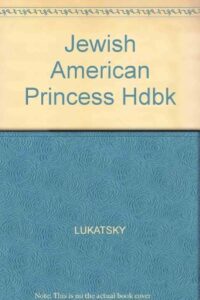
And his Judahite (or Jewish) wife bore Jered father of Gedor and Hever father of Sochoh and Jekutiel father of Zanoah. And these were the sons of Bisya daughter of Paroy whom Mered took as his wife.
Well, blow me down again: in this posik from Chronicles, she is described as the Jewish wife of Mered. What? A Jewish wife -in this case, Bisya- married to Mered has children who are listed here? What’s going on? Who is Mered? As it turns out, in Divrey Hayomim I Chronicles. 4:18 we read this: Mered married that the daughter of Paroy. This Mered fellow is actually also known as Kolave ben Yefuneh. What? In this medrish he was given the name “Mered” because he rebelled (marad) against the counsel of the miraglim/spies (when they spoke ill of the land of Canaan) and just like that, Kolave -considerably younger than Bisya- married her. How old were Kolave and Bisya -Paroy’s daughter when they married? He was 40 at the time of the Exodus, and she was at least 90; when exactly they got married and had kids, ver veyst? Ober, let us keep this in mind: these questions are based on rabbinic tradition – aka; medrish, and not biblical passages. Nowhere in the heylige Toirah does it mention that Kolave married Bitya or Bisya or Batya, or even Miriam for that matter.
Ober, let’s play along and assume that the medrish is correct and that Kolave did marry Bisya. Why should that bother you? To make the numbers work out chronologically, one would have to assume that this woman, Paroy’s now Jewish daughter and princess- married into Kolave’s family at an extreme old age (well over 100) and had children. Did that happen? Why not? Didn’t we learn in yeshiva that Moishe’s mother -Yoicheved- was 130 years old when she gave birth? Yes, but isn’t that a medrish? Yes, and so what? This is also a medrish. Is this entire calculation mamish a stretch of the truth? Indeed it is! Ober, in the medrish, -this one, and many others- such stretches are not beyond rabbinic imagination. They had license to imagine, they were our holy sages. And for that reason alone -and many others- the medrish is mamish gishmak and givaldig. No one says we must take them literally but we must congratulate its authors for their creativity and imagination. Ober, didn’t we taka learn that Kolave was married to Miriam, Moishe’s sister? We did! If that’s emes, how could he be married to Bisya, Paroy’s daughter? Shoin, don’t confuse yourself by asking logical questions from one medrish on another. Where is it written that competing medroshim must be aligned? Who says they have to be logical? Besides, maybe Kolave, stud that he was, and only one of two jews to survive the 40 year midbar terek before entering into the promised land, could have been married to Bisya before, after, and even while married to Miriam. Didn’t many back then have multiple wives? They did. The fact that competing medroshim conflict is not your business and case closed.
Shoin, let’s get back to the Bisya, the now Jewish princess. In the heylige Gemora (Megillah 13a), we read this: Bisya is referred to as Jewish because she repudiated idol worship, as it is written:
“And the daughter of Paroy came down to wash herself in the river” (Shmois 2:5), and Rabbi Yoichonon said: “She went down to wash herself from the idols of her father’s house.”

The bottom line according to this medrish: she went down to the river and used the river as a mikveh to convert. And just like that, Paroy’s daughter was now a Jewish princess, perhaps the first ever. And since she gave up on idol worship before -or just before- she spotted Moishe, thus she was fit to act as Moishe’s mother.
אַמַּאי קָרֵי לַהּ ״יְהוּדִיָּה״ — עַל שׁוּם שֶׁכָּפְרָה בַּעֲבוֹדָה זָרָה, דִּכְתִיב: ״וַתֵּרֶד בַּת פַּרְעֹה לִרְחוֹץ עַל הַיְאוֹר״, וְאָמַר רַבִּי יוֹחָנָן: שֶׁיָּרְדָה לִרְחוֹץ מִגִּילּוּלֵי בֵּית אָבִיהָ.
Does everyone agree that she went down to the river to use it as a mikveh for conversion purposes? Of course not and in the Pirkei de-Rabbi Eliezer -another medrish- we find another reason -this one a bit less flattering- why it so happened that Paroy’s daughter went down to the river that day to wash herself; let’ read it (48:8):
והיתה בת פרעה מונגעת בנגעים קשים ולא היתה יכולה לרחוץ בחמין, באת לרחוץ ביאורה וראתה את הנער בוכה, ושלחה ידה והחזיקה בו ונתרפאת. אמרה, הנער הזה צדיק הוא, וקיימתו לחיים,
Now Bisya, the daughter of Paroy, was smitten sorely with leprosy and she was not able to bathe in hot water, and she came to bathe in the river, and she saw the crying child. She put forth her hand and took hold of him, and she was healed. She said: This child is righteous, and I will preserve his life. In this medrish, it’s Moishe who saves Bisya from her affliction. Gishmak!
Which version is emes, ver veyst? What we know with certainty is that she came down to the river bank with her servants. Perhaps she was planning on beach volleyball, ver veyst.
Shoin, let’s close out with this question: What became of Bisya, this most famous person – seemingly a heroic single mother- who went unnamed in the entire heylige Toirah? According to yet another medrish, in her later years, Paroy’s daughter devoted herself to Moishe, and to the RBSO. She even celebrated the first Pesach Seder with Moishe in the slaves’ quarters and for that, her firstborn is the only Egyptian to survive the final of the ten plagues. And now you know. The end!
A gittin Shabbis!
The Heylige Oisvorfer Ruv
Yitz Grossman
